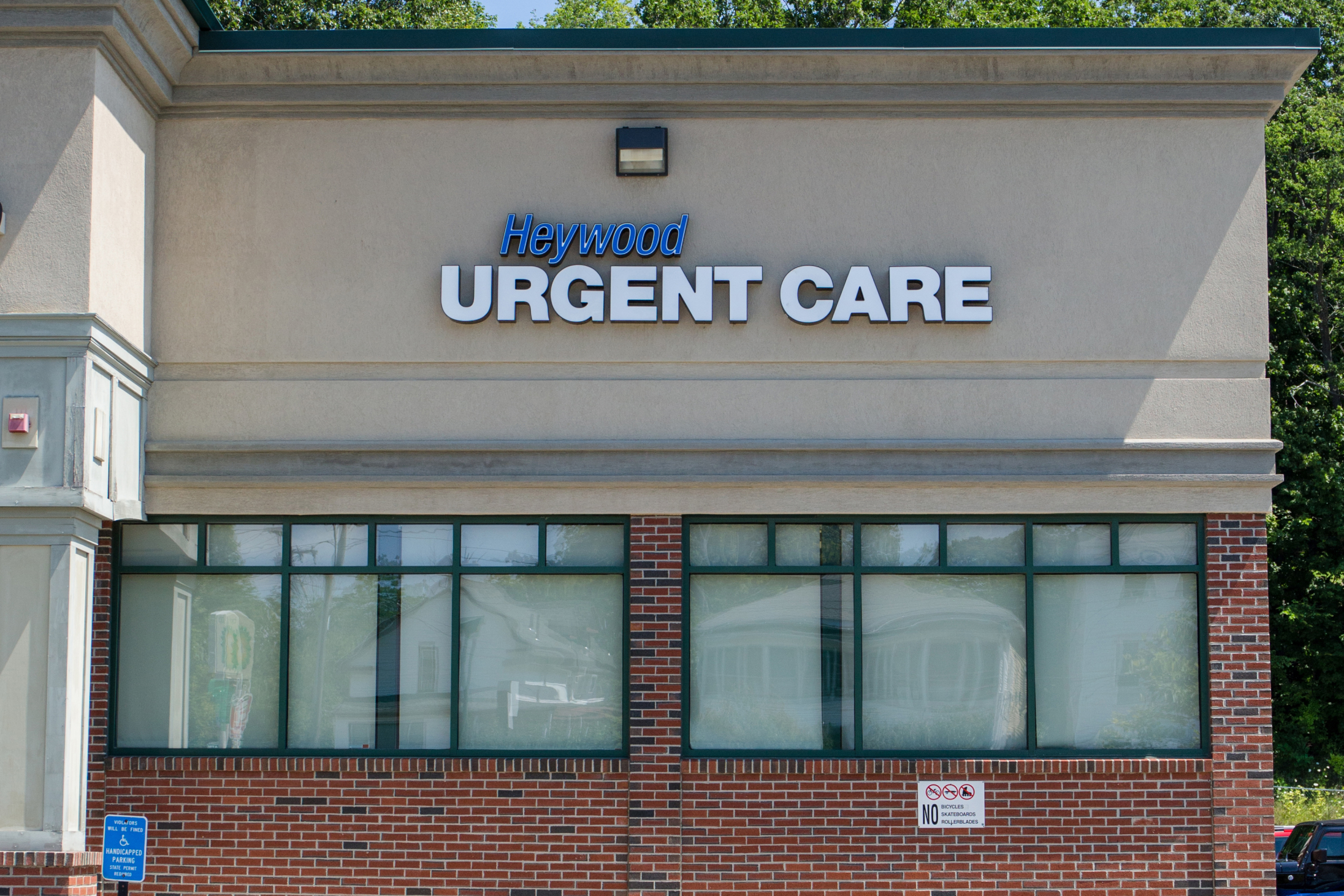The Ultimate Overview to Comprehending Urgent Care Clinics
The Ultimate Overview to Comprehending Urgent Care Clinics
Blog Article
Recognizing the Duty of Urgent Treatment in Offering Timely Treatment for Non-Life-Threatening Problems
Immediate care facilities have emerged as an essential component of the healthcare landscape, attending to the instant demands of individuals with non-life-threatening problems. By providing accessible and timely clinical solutions, these centers properly connect the space between health care and emergency divisions. Nonetheless, the effects of their role prolong beyond simple comfort, prompting a better examination of when and exactly how these facilities are made use of. Understanding the subtleties of urgent care could dramatically affect person results and the total efficiency of health care shipment. What aspects add to their growing significance in modern medication?
What Is Urgent Treatment?
Urgent care refers to a category of medical solutions made to resolve non-life-threatening conditions that need prompt interest. These facilities function as an intermediary between health care physicians and emergency clinic, using a hassle-free choice for patients who need timely treatment without the substantial waiting times typically connected with emergency situation departments.
Urgent care facilities are typically staffed by doctor, consisting of medical professionals, registered nurse specialists, and medical professional assistants, who are educated to identify and treat a large array of conditions. Typical solutions provided by these facilities consist of therapy for minor injuries, illnesses, and infections, along with analysis tests such as X-rays and lab work.
Additionally, immediate treatment centers often accept walk-in people, removing the requirement for consultations. Generally, immediate treatment plays an essential function in the health care system, guaranteeing people can access crucial medical services quickly and efficiently.

Numerous individuals may discover themselves uncertain concerning when to look for care at an immediate treatment facility as opposed to a main care physician or an emergency clinic. Immediate care is created to attend to non-life-threatening conditions that require punctual interest but are not severe sufficient to require an emergency situation room go to.
Usually, one must consider urgent take care of issues such as small fractures, strains, cuts requiring stitches, or infections like urinary tract infections. Additionally, chilly or flu signs, rashes, and allergies can also be suitably taken care of in this setting.
It is essential to keep in mind that immediate care is not appropriate for dangerous emergencies, such as upper body pain, problem breathing, or extreme blood loss, which demand immediate emergency situation room intervention.
Individuals who do not have access to a medical care doctor or can not protect a prompt appointment may additionally take advantage of immediate care solutions. Inevitably, recognizing when to use immediate care can lead to extra effective health care shipment, permitting patients to receive the ideal level of care based upon their specific health and wellness needs.
Advantages of Urgent Treatment Centers
Choosing urgent care facilities for non-life-threatening problems offers several advantages that improve patient experience and ease of access. One key advantage is the reduced wait times contrasted to traditional emergency situation rooms. Immediate treatment facilities usually operate on a first-come, first-served basis, enabling people to obtain timely medical interest without the lengthy delays usually related to health center setups.
In addition, immediate treatment centers offer extensive hours, consisting of nights and weekends, accommodating people with differing timetables. This flexibility ensures that individuals can seek care when it is most hassle-free for them, even more advertising prompt intervention.

Additionally, these facilities frequently provide a detailed array of solutions, consisting of diagnostic tests and minor procedures, all under one roofing system. This loan consolidation of services not just enhances the person experience however additionally fosters a much more cohesive technique to managing non-life-threatening health and wellness issues, eventually profiting total individual end results.
Usual Problems Treated
At urgent care centers, a range of non-life-threatening conditions can be efficiently dealt with, offering patients with accessible and timely medical support. These centers are especially adept at dealing with problems that require timely attention yet do not posture a prompt threat to life or limb.
Usual conditions dealt with at immediate care facilities include small injuries such as fractures, sprains, and stress. In addition, they manage diseases like colds, flu, and infections, including urinary tract infections and sinusitis. Skin conditions, varying from rashes to insect attacks, are also often attended to. Urgent care facilities are outfitted to carry out essential diagnostic examinations, such as X-rays and laboratory tests, enabling them to this provide comprehensive care.
Furthermore, urgent treatment providers can provide inoculations, assisting to prevent the spread of contagious conditions - Urgent Care. They additionally offer solutions for minor treatments, such as suturing wounds or draining abscesses. By supplying these diverse solutions, immediate treatment centers play a crucial role in linking the void in between health care and emergency situation solutions, guaranteeing individuals obtain prompt treatment for a large range of conditions without the need for long haul times usually connected with emergency clinic
Exactly How Urgent Treatment Supports Medical Care System
Urgent care centers play a critical role in supporting the total healthcare system by easing the concern on emergency departments and offering prompt access to medical treatment for non-life-threatening conditions. By dealing with cases such as small injuries, infections, and illnesses, urgent treatment centers permit emergency situation departments to their website concentrate on even more vital people requiring immediate focus.
In addition, immediate treatment centers boost healthcare access, supplying extensive hours and an easier alternative to typical health care settings. This access is particularly useful for clients who may not have a normal medical professional or that need prompt treatment outside of typical office hours. Because of this, urgent care centers properly decrease improve and wait times patient fulfillment.
In addition, urgent care facilities add to cost savings for both patients and the health care system by supplying lower-cost services compared to emergency divisions. This economic effectiveness is vital in a period of climbing medical care prices, allowing patients to receive necessary care without sustaining outrageous expenditures.
Verdict
To conclude, urgent care facilities play an important function in the medical care system by delivering punctual therapy for non-life-threatening conditions. By linking the space in between key treatment and emergency situation spaces, these centers guarantee that clients receive timely medical interest without the prolonged wait times commonly this related to emergency situation departments. The availability and effectiveness of urgent treatment centers contribute considerably to relieving the general problem on medical care resources, improving patient outcomes, and advertising an extra effective medical care delivery system.
Immediate care centers have emerged as a vital component of the medical care landscape, resolving the prompt demands of clients with non-life-threatening conditions. Urgent care sees generally incur reduced out-of-pocket costs contrasted to emergency situation division gos to, making treatment much more affordable for clients without jeopardizing high quality. Urgent treatment facilities are geared up to perform needed analysis tests, such as X-rays and research laboratory tests, allowing them to provide comprehensive treatment.
By using these diverse solutions, immediate care centers play a crucial duty in bridging the gap in between primary care and emergency services, ensuring patients get timely treatment for a wide range of problems without the requirement for long delay times normally associated with emergency situation spaces.
Moreover, urgent care facilities improve medical care availability, offering prolonged hours and a more practical choice to typical main care setups.
Report this page